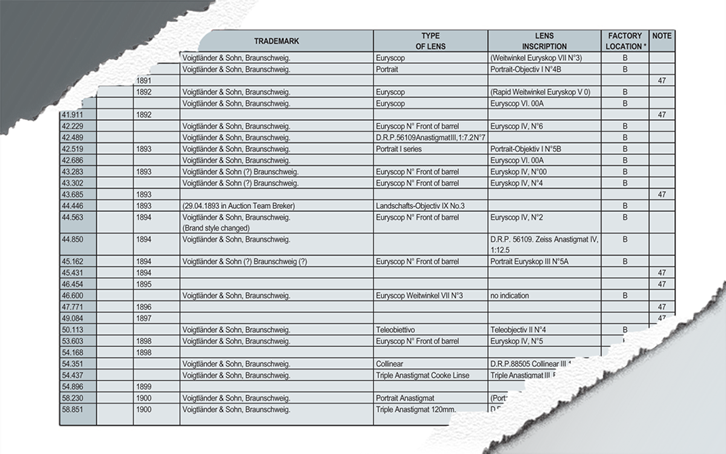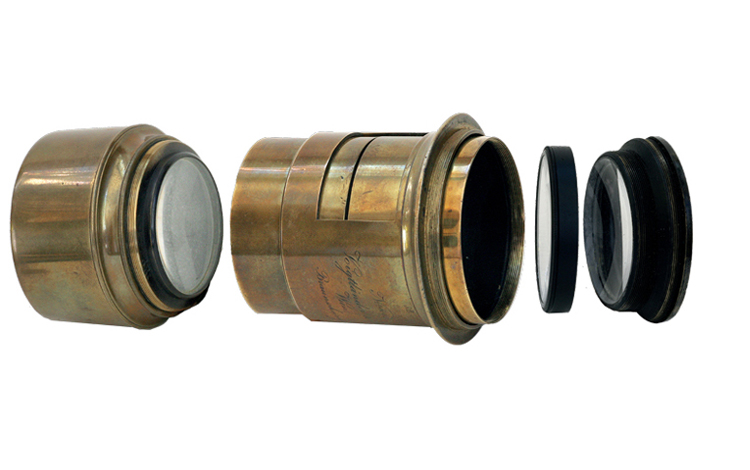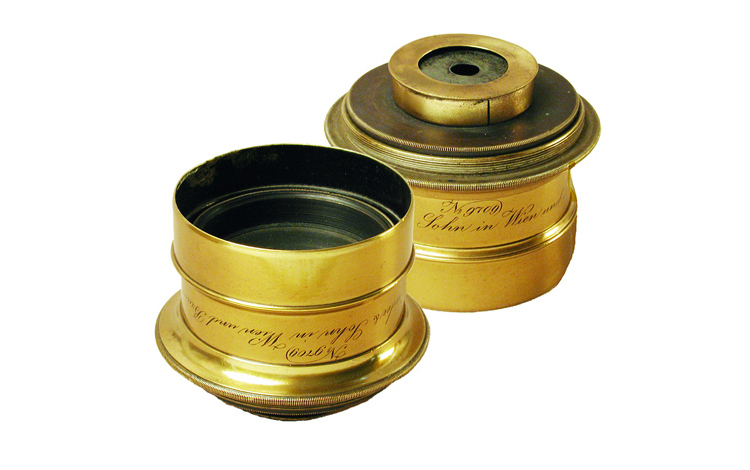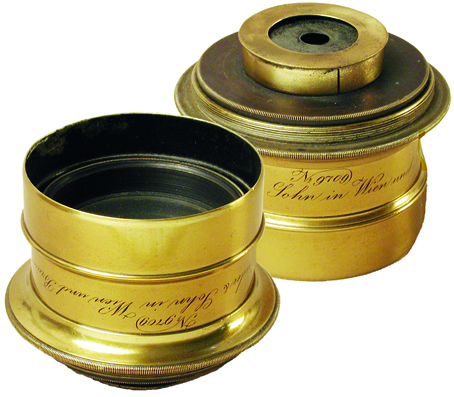A short excerpt from the second chapter: Voigtländer
… In the decade between 1840 and 1850 the company continued manufacturing and selling precision optical devices, telescopes and binoculars, even though its main objective was to satisfy the huge request for portrait lenses. According to Von Rohr (10), in that period and in the following years Voigtländer was so intent on this goal that he had no time to devote to improving his optics and to experimenting ways to correct the chemical focus of his portrait lens as Ross had done in England and Lerebours in France as early as 1846 (11). In the Spring of 1845, during a journey to Braunschweig, P.W.F. Voigtländer, whose wife had died the year before, met and later married Nanny Langenheim. Nanny had lost her husband Gustav Otto Zincke Sommer with whom she had had two sons: Hans in 1837 and Adolf in 1839. Hans would become a great lens maker and would design several lenses, among which the renowned Euryscop which the company began manufacturing in 1877. In 1846 the company manufactured portrait lenses in four sizes: 1 ½-inch, two, three and four inches. A brass camera was sold without accessories or with three lenses of focal lengths up to 3 inches (12). Only in 1852 were they able to overcome the difficulties of building a brass camera that would accommodate the 4-inch lens (13). A wooden box-camera version was also built at a much cheaper price than the brass Petzval model. Using one of Petzval's earlier designs, a 6-element lens was produced for miniature daguerreotypes that were to be hung from necklaces (14). And in 1848 a landscape lens was also fabricated by reversing the front element of the Petzval lens design (15). The 1848 revolution that brought disorder to so many European cities reached Vienna as well in March and May with numerous episodes of social unrest. Voigtländer was preoccupied by this, along with the uncertain political situation in Austria and the interminable legal battle with Petzval. Voigtländer's new ties with his wife's family in Braunschweig convinced him on March 26th 1849 to ask for residence in the German city with an eye on moving his company there. The city's geographical location and its access to an important railway network were other determining factors in this decision (16). The residence permit was denied for several years until it was agreed with the local administrators that the company would hire local workers, transferring from Vienna only those craftsmen specialized in working glass. At the time there were about 20 workers employed by the company. On Oct. 1st 1852 the Braunschweig authorities granted P.W.F. Voigtländer the permit to build the German factory which required about three years' work to complete. Ten years later, at full operation, the Braunschweig factory had added fifty workers to the previous 20 from the Vienna plant. And in 1865 that number further increased to a total of 80 workers (17). A couple of years later the Braunschweig factory had begun making the lenses that from that moment until 1887 would bear the "Voigtländer & Sohn in Wien u. Braunschweig" trademark…
Continue...
Footnotes:
(10) Von Rohr p. 272. (Please note that the Viennese inch equals 26.34mm.)
(11) Von Rohr p. 103. Eder 1905.
(12) Anton Martin. Repertorium der Photographie, 1846. Mentioned also by Grabenhorst p. 48-50. Prices have been calculated in florins based on the Compendio di metrologia (1900), which states that in Austria 1 taller equaled 2,104 florins. Also please note that the Viennese inch corresponded to 12 "lines"and to 26.34mm.
(13) Anton Martin. Repertorium der Photographie, 1846. p. 128 and Daguerreotyp-Apparate von Voigtländer& Sohn in Wien und Braunschweig. Braunschweig, March 1852.
(14) The 1927 Voigtlander catalogue mentions this on p. 2.
(15) Anton Martin. Sitzungsberichte der mathematics-naturwissenschaftlischenKlasse der Kaiserlichen Akademie der Wissenschaften. Vienna (Acts of the meeting of the section of naturalists and medical doctors of the Imperial Academy of Sciences, Vienna.) 1848. p. 558-567, quoted by Von Rohr p. 272.
(16) Grabenhorst p. 41.
(17) Grabenhorst p. 78.










